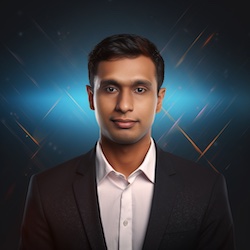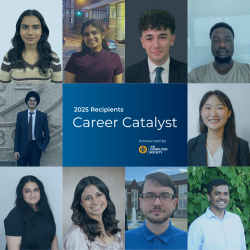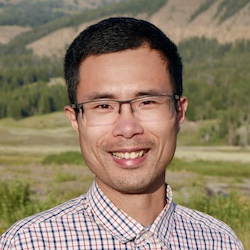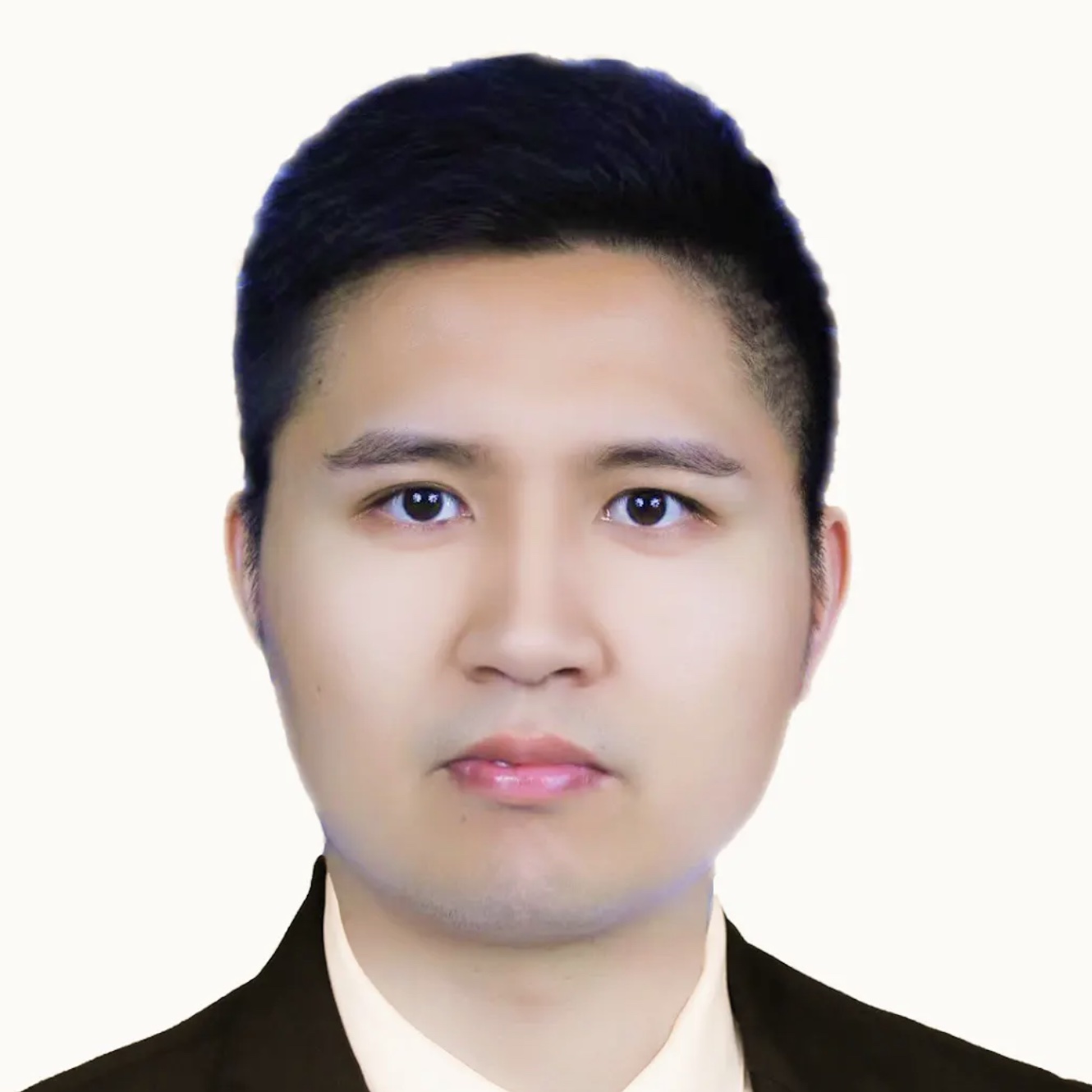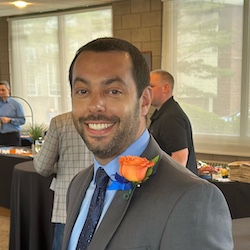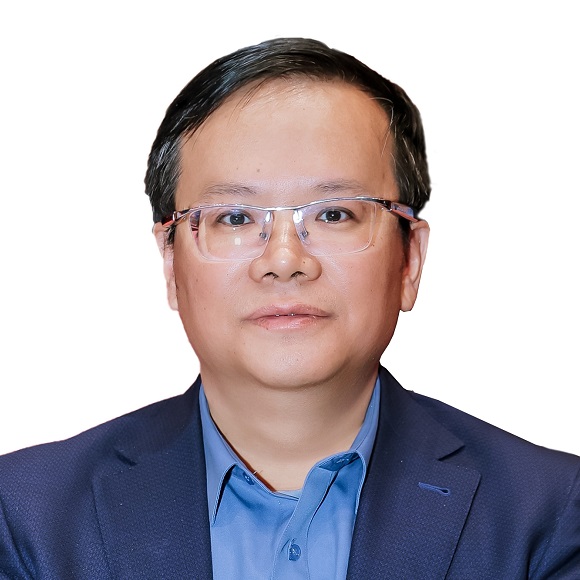Computing’s Top 30: Tejas Chopra
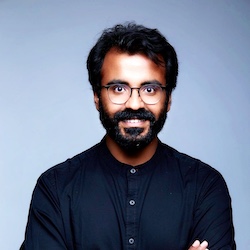
Two minutes into his TedX talk on AI and the environment, Tejas Chopra notes that training a single large language model releases roughly the same amount of carbon dioxide into Earth’s atmosphere as 125 roundtrip flights from New York to Beijing.
In keeping with his ever-practical approach, Chopra goes on to suggest several concrete ways to reduce AI’s carbon footprint by optimizing resource use, energy consumption, and AI decision-making across industries.
An accomplished engineer specializing in storage systems, cloud infrastructure, and machine learning platforms, Chopra is not content to simply contribute technology solutions to the world; he also works to further the sustainability of computing both in the physical environment and in the talent that fuels the field.
To the latter end, Chopra co-founded GoEB1—now EnsolAI—a platform aimed at helping U.S. immigrants working in technology to find opportunities to build their brand and their impact.
Currently a senior software engineer at Netflix, Chopra is also one of Computing’s Top 30 Early Career Professionals. In the following Q&A, Chopra describes
- The hybrid storage solutions he created at Netflix to manage exabyte-scale data—while also saving tens of millions of dollars in storage costs quarterly—and how these solutions streamlined collaboration in the Netflix content production pipeline
- How highlighting the successful alignment of technical innovation and environmental responsibility can inspire a new generation to view environmental impact as a fundamental design constraint
- The key lessons he has learned in his career thus far, and how those lessons have influenced his approach to innovation and his leadership style
- How the Netflix Drive’s innovative architecture bridges the gap between traditional file system semantics and the economies of scale provided by cloud object storage
You were recognized as a Tech 40 Under 40 award recipient for your leadership and innovation in the tech industry. Can you share some key projects or initiatives that contributed to this recognition?
My recognition as a Tech 40 Under 40 recipient stems from several impactful projects throughout my career that have transformed how organizations handle data storage and infrastructure. It is also a reflection of a lot of conferences, podcasts, and advisory engagements I have undertaken in the past few years as an IEEE Senior Member, a British Computer Society (BCS) Fellow, an advisory board member for Flash and Memory Storage, and an advisor to Toronto Machine Learning Summit.
At Netflix, my leadership in developing the Machine Learning Platform for consumer systems has been instrumental in architecting feature stores that power Netflix’s recommendation engine. This platform processes massive amounts of user interaction data to deliver personalized content experiences to millions of subscribers worldwide.
Additionally, as a senior engineer for storage infrastructure at Netflix Studios, I’ve pioneered hybrid storage solutions that manage exabyte-scale data while implementing optimizations that save tens of millions of dollars in storage costs quarterly. This work has been crucial for Netflix’s content production pipeline, enabling creators to collaborate efficiently despite working with enormous media files.
Another significant contribution was the development of Netflix Drive, a cloud drive specifically designed for studio and media assets. This project required deep understanding of both cloud technologies and the unique requirements of media production workflows.
Prior to Netflix, at Box, I architected smart data placement and lifecycle policies for enterprise content in hybrid environments, saving over $5 million in annual recurring revenue and increasing infrastructure availability from 99.9% to 99.99%. At Datrium, I led the design of a metadata storage layer for latency-sensitive VMs and implemented deduplication engines that significantly improved efficiency.
My work at Samsung Semiconductors also contributed to this recognition; there, I designed a software layer that converted random writes in the Android storage subsystem into sequential writes, improving performance by over 5% and enabling Samsung to build cheaper flash storage devices with better performance, benefiting approximately 10 million Samsung Android phones.
As a Senior IEEE Member and BCS Fellow, how do you stay engaged with these professional communities, and what value do you find in these affiliations?
My engagement with IEEE and BCS communities has been multifaceted and mutually beneficial. As a Senior IEEE Member, I regularly participate in special interest groups focused on storage systems, distributed computing, and machine learning infrastructure. This involvement takes several forms, including technical committee participation, where I help evaluate emerging research and industry practices.
I stay connected through active participation in IEEE conferences, both as an attendee and presenter. These events provide invaluable opportunities to exchange ideas with peers working on similar challenges. At conferences like IEEE Consultants’ Network of Silicon Valley (CNSV), I’ve presented work on hybrid storage architectures similar to those I’ve implemented at Netflix, creating bidirectional knowledge transfer between academic research and industry practice.
With BCS, I engage primarily through its professional development and mentorship programs. As a Fellow, I contribute to workshops and webinars focused on career advancement in specialized technical domains, sharing insights from my journey from a design engineer at Cadence to leadership roles at Netflix.
The value I derive from these affiliations is substantial. First, they provide access to cutting-edge research before it reaches mainstream implementation. This early insight has directly informed my work at Netflix, particularly in optimizing machine learning infrastructure and implementing advanced storage policies.
Second, these communities offer an invaluable professional network spanning academia, industry, and research institutions. This diverse network provides perspectives that wouldn’t be available within a single organization and has led to several collaborative projects and hiring opportunities.
Third, the continuous learning opportunities through these organizations help me stay at the forefront of technological developments. BCS’s specialized training programs have complemented my industry experience with structured learning in emerging areas, while IEEE’s technical standards committees provide deep insight into evolving technology benchmarks.
Finally, these affiliations provide platforms for giving back to the technical community. Through mentoring programs, conference organization, and technical review committees, I can help guide the next generation of engineers while ensuring that industry perspectives inform academic research directions.
Overall, these professional communities serve as invaluable bridges between theoretical advances and practical implementation, enriching both my professional growth and my contributions to the organizations I serve.
You have been invited as a TEDx speaker twice. What are some of the key messages you aim to convey in your talks, and how do you engage and inspire your audience?
As a two-time TEDx speaker, I’ve focused on raising awareness about the environmental impact of technology—an often overlooked dimension of the digital revolution.
My first TEDx talk, “Carbon Footprint of Software Development,” highlighted how software engineering practices directly impact the environment. Drawing from my extensive experience across Netflix, Box, and other technology companies, I demonstrated how seemingly small coding decisions—including algorithm efficiency, data storage approaches, and deployment architectures—collectively create significant environmental consequences at scale. I shared concrete examples of how optimized code can dramatically reduce energy consumption, drawing parallels between my work optimizing storage systems that saved millions in costs and their corresponding reduction in carbon emissions.
My second TEDx presentation, “AI’s Carbon Footprint Impact,” examined the environmental duality of artificial intelligence. I detailed how training large AI models can consume substantial energy resources—a concern given the explosive growth of AI applications. Using my experience with machine learning platforms at Netflix, I quantified this impact and then pivoted to explore how AI itself can become part of the solution. I showcased opportunities where AI can optimize resource usage, energy consumption, and environmental decision-making across industries.
In this talk, I also introduced concepts around model compression techniques that maintain performance while significantly reducing computational requirements. This work extends beyond my TEDx presentations into various technical conferences, and I’m developing a LinkedIn course specifically on model compression to help practitioners implement these approaches.
To engage and inspire diverse audiences, I translate complex technical concepts into accessible frameworks that everyone can understand. I use visual analogies that help non-technical audiences grasp the magnitude of digital energy consumption—comparing data centers to small cities and relating the energy used in training large language models to tangible everyday activities.
I build audience connection by emphasizing individual agency, demonstrating how engineers, companies, and consumers can all make choices that collectively lead to substantial environmental improvements. Rather than presenting a pessimistic view, I offer practical, actionable approaches and showcase success stories where technical innovation and environmental responsibility have been successfully aligned.
Interactive elements feature prominently in my presentations, sometimes including live demonstrations of energy consumption differences between optimized and unoptimized code or having audience members calculate their own digital carbon footprints during the session.
Through these talks, I aim to inspire a new generation of technologists who consider environmental impact as a fundamental design constraint—equal to performance, cost, and user experience—and to help business leaders understand that sustainability and technical excellence are complementary rather than competing priorities.
At Netflix, you lead the design and implementation of the Machine Learning Platform for consumer systems. Can you discuss a recent project you worked on and the innovative techniques you used?
A recent project I led at Netflix involved significant cost optimization strategies for our Axion storage system, which is the foundation of our offline feature computation pipeline powering Netflix’s personalization models. Axion serves as our fact store that supports machine learning needs across Netflix by storing high-quality data used to compute ML features offline, helping eliminate training-serving skew and accelerate offline experimentation.
While Axion has been instrumental in our machine learning infrastructure, we identified performance bottlenecks in our feature computation pipeline as Netflix’s recommendation systems became increasingly sophisticated. The exponential growth in data volume was creating challenges, particularly in query performance for our machine learning training jobs.
Our innovation centered around reimagining data partitioning and layout strategies to leverage the latest capabilities in Apache Spark 3.5 and Iceberg 1.4. The traditional approach to data organization in Axion was suffering from excessive data shuffling during join operations, which was both computationally expensive and time-consuming when training models on massive datasets.
We implemented a multifaceted solution that fundamentally changed how data is organized within Axion. First, we developed a custom partitioning scheme based on detailed analysis of our most common query patterns. Rather than using generic time-based partitioning, we created a hybrid approach that considers both temporal aspects and the relationship structures in our feature data, aligning physical data organization with our most frequent join patterns.
A key technical innovation was implementing Iceberg 1.4’s dynamic partition pruning capabilities, which allows the query engine to eliminate unnecessary partitions during execution time rather than during planning. This proved particularly valuable for our complex, multi-join queries where the relevant partitions depend on intermediate results.
We also fully leveraged Spark 3.5’s Adaptive Query Execution framework to dynamically reoptimize query plans during execution. For our workloads, we extensively tuned the coalesce partition feature to prevent the creation of small files while maintaining optimal parallelism. This required developing custom cost models that consider Netflix’s specific infrastructure characteristics and workload patterns.
One of the most impactful innovations was implementing a join-aware data clustering strategy within Iceberg tables. By analyzing the join columns used in our most resource-intensive queries, we reorganized data files to collocate records that are frequently joined together. This significantly reduced data movement during query execution by allowing more join operations to happen locally without shuffling.
This optimization builds on Netflix’s earlier work with Axion and DeLorean (our time travel feature for offline feature computation). While Axion provides temporally accurate features to eliminate training-serving skew, and DeLorean offers the ability to generate features from historical snapshots, my work focused on making these systems more efficient. By improving the underlying storage and query patterns, we’ve enhanced the performance of the entire machine learning pipeline that powers Netflix’s recommendation system.
The results have been remarkable—we’ve achieved a 10x reduction in query time for our most important training workloads by almost completely eliminating expensive shuffle operations during joins. This performance improvement translates directly to faster model iteration cycles, allowing our data scientists to train and deploy improved recommendation models more frequently. Additionally, this work has substantially reduced our computational footprint, leading to significant cost savings while supporting Netflix’s broader sustainability initiatives.
Your role at Netflix also involves managing the storage infrastructure for Netflix Studios. How do you approach optimizing storage to manage exabyte-scale data and save costs?
Managing exabyte-scale data for Netflix Studios requires a sophisticated approach to storage optimization. At the core of my strategy has been the development of Netflix Drive, a patented cloud file system I led the design and implementation of, which provides a POSIX-compatible interface over object storage.
Netflix Drive represents a significant advancement over existing alternatives in the market. It was specifically designed to address the unique challenges of media production workflows while maintaining cost efficiency at scale. The system is inherently more extensible and modular than conventional solutions, allowing us to adapt to the evolving needs of creative teams while keeping infrastructure costs manageable.
What makes Netflix Drive particularly innovative is its architecture, which bridges the gap between traditional file system semantics that creative applications require and the economies of scale that cloud object storage provides. Creative teams can interact with their media assets through familiar file system operations, while the underlying infrastructure leverages the cost advantages of object storage.
To further enhance storage efficiency, I developed patent-pending compression and deduplication strategies specifically optimized for S3 object storage. Our approach implements dynamic chunking of objects, which intelligently identifies redundant data patterns common in media workflows, such as repeated frames or similar audio sequences across different edits of the same content. Unlike fixed-block deduplication systems, our dynamic chunking adapts to the content characteristics, achieving significantly higher deduplication ratios for media assets.
Another key aspect of our storage optimization strategy involves sophisticated lifecycle policy management for S3 storage tiers. Media assets follow predictable usage patterns throughout the production lifecycle—from being actively accessed during editing to rarely accessed after a production wraps. I implemented automated policies that track assets through this entire pipeline and automatically migrate data between storage tiers based on access patterns, production schedules, and content metadata.
These lifecycle policies intelligently route data to the appropriate storage tier—from Standard S3 for active projects to Glacier Deep Archive for completed productions—while maintaining the appropriate metadata to ensure assets remain discoverable and retrievable when needed. The system also considers project priorities and deadlines, ensuring that mission-critical assets remain on performant storage during crucial production phases.
The results of these initiatives have been substantial. Netflix Drive’s implementation, combined with our compression, deduplication, and lifecycle management strategies, has enabled Netflix Studios to handle the explosive growth in content production while saving tens of millions of dollars in storage costs per quarter. More importantly, these optimizations have been achieved without compromising the creative workflow, allowing our content creators to focus on storytelling rather than storage management.
This comprehensive approach to storage optimization has been fundamental to Netflix’s ability to scale its content production while maintaining cost efficiency, demonstrating how innovative technical solutions can directly impact both business outcomes and creative capabilities.
Reflecting on your career journey, from your education at Carnegie Mellon University to your roles at Netflix, Box, Datrium, Samsung, and Cadence, what are some key lessons you have learned, and how have they shaped your approach to innovation and leadership?
My career journey has taught me several invaluable lessons that have profoundly shaped my approach to innovation and leadership.
First, technical excellence must be balanced with business impact. At Carnegie Mellon, I developed strong technical foundations, but it was at companies like Datrium and Box that I learned how engineering decisions directly impact business outcomes. For instance, at Box, increasing infrastructure availability from 99.9% to 99.99% wasn’t just a technical achievement—it exceeded customer SLA guarantees and became a competitive advantage. This lesson has made me approach every technical decision by considering its broader business implications.
Second, architectural decisions have long-lasting consequences. At Samsung, I saw how a relatively simple software layer that converted random writes to sequential writes improved performance by just 5%, but that modest improvement scaled to impact millions of devices. This taught me to carefully consider the scalability and long-term impact of design choices, rather than just immediate functionality.
Third, transformation happens at system boundaries. At both Netflix and Box, some of the most impactful work occurred when transitioning from monolithic architectures to microservices. At Box, I led the transition from a single monolithic storage service to a platform of microservices, resulting in 100% growth in platform usage. This experience taught me that innovation often happens not within existing systems but at their edges and intersections.
Fourth, cost optimization and technical innovation are not opposing forces. At Netflix Studios, implementing hybrid storage solutions to manage exabyte-scale data while saving tens of millions in quarterly costs demonstrated that financial efficiency can drive technical creativity. This has made me approach engineering challenges with both technical excellence and resource optimization in mind.
Finally, knowledge sharing amplifies impact. As a tech evangelist for Netflix and an adjunct professor, I’ve learned that sharing insights multiplies their value. This has shaped my leadership style to emphasize mentorship, clear communication, and community contribution.
These lessons have collectively influenced my approach to innovation—making me focus on technically excellent solutions that scale efficiently, deliver measurable business impact, and evolve gracefully—and my leadership style, which prioritizes system thinking, business alignment, and knowledge sharing.
You regularly speak at industry conferences such as QCon and the Flash Memory Summit. What topics do you find most engaging to discuss, and how do you stay updated with the latest advancements in these areas?
Having spoken at over 50 conferences in the last four to five years, I find several technical domains particularly engaging to discuss with industry audiences. My conference talks have primarily centered on DevOps practices, cloud infrastructure optimization, engineering leadership principles, ML model compression techniques, privacy-preserving compute methodologies, building scalable storage solutions, and to some degree, blockchain applications.
Cloud infrastructure and scalable storage solutions are especially engaging topics for me as they connect directly with my work at Netflix managing exabyte-scale data systems. When discussing these areas, I can share practical insights from implementing hybrid storage architectures that balance performance requirements with cost optimization—work that has saved Netflix tens of millions in quarterly storage costs while maintaining the performance needed for media production workflows.
Engineering leadership discussions allow me to synthesize technical expertise with organizational strategy. Drawing from my experience leading teams across multiple technology companies, I explore how technical decisions intersect with team dynamics, product direction, and business outcomes. These talks often generate the most interactive Q&A sessions, as audience members connect with both technical and leadership challenges they face in their organizations.
More recently, ML model compression has become a focal point of my presentations. As machine learning deployments scale, the computational efficiency of models becomes increasingly critical. I discuss techniques for reducing model size and computational requirements while maintaining performance—knowledge directly informed by my work on Netflix’s machine learning platform for recommendation systems.
To stay updated with the latest advancements across these diverse domains, I employ a multifaceted approach. First, I actively develop proof-of-concept implementations for emerging technologies, believing that hands-on experimentation provides insights that theoretical understanding alone cannot match. These practical explorations help me assess real-world impacts and limitations beyond what’s covered in technical documentation.
I maintain an extensive professional network that serves as a valuable information source. Regular exchanges with fellow technologists working across different industries and technical domains provide early awareness of emerging trends and technologies before they reach mainstream adoption. This network includes both senior technology leaders and practitioners on the ground implementing cutting-edge solutions.
Additionally, I systematically consume information from diverse sources: engineering blog posts from leading technology companies, academic papers covering system design innovations, AI research publications, and technical podcasts that feature conversations with technology creators. This disciplined approach to ongoing learning ensures that I maintain both breadth and depth of knowledge across my areas of expertise.
Advising startups and founders also provides unique visibility into emerging technologies. These interactions offer a window into innovation happening at the edges of established technology domains and help me anticipate future directions in cloud infrastructure, machine learning optimization, and privacy-preserving technologies.
By combining practical experimentation, knowledge networks, systematic learning, and advisory roles, I maintain currency across multiple technical domains while developing insights that conference audiences find valuable for their own work.
Beyond your technical achievements, you’re also the co-founder of EnsolAI. Could you share more about this initiative and how you’re using AI to empower immigrants in the tech industry?
Ensol is a platform that leverages AI to help immigrants transform into recognized thought leaders in their fields—something that’s not just career-enhancing but often critical for those navigating specialized visa pathways like EB1A, O1, and EB2-NIW.
Many brilliant engineers and researchers come to the U.S. with exceptional technical skills but face challenges in building the visibility and recognition necessary for career advancement and immigration security. At Ensol, we’ve built AI systems that identify personalized opportunities like conference speaking engagements, hackathon judging positions, and journal peer review openings that align with each individual’s expertise and career trajectory.
What makes our approach unique is that we don’t just match people with opportunities—we use AI to help them succeed by generating tailored abstracts, presentation outlines, and application materials that highlight their unique perspectives and accomplishments. Our systems help immigrants overcome the uncertainty of “where do I start?” and the language barriers that sometimes prevent excellent technical professionals from showcasing their expertise.
I’m particularly proud that we’ve helped countless immigrants secure prestigious visa classifications by building their portfolios of contributions to their fields. For example, we recently helped a machine learning engineer from India—who had never presented at a conference before—secure speaking positions at three major industry events, which became critical evidence for her successful EB1A application.
This work brings together my technical expertise in AI with my personal passion for creating more inclusive pathways in the tech industry. The technologies we’re building at Ensol are increasingly relevant as both immigration policies and career advancement in tech become more competitive and credentials-focused.
As the tech industry continues to rely on global talent, I believe that building systems that help talented people navigate visibility barriers isn’t just good for individuals—it enriches the entire ecosystem by bringing diverse perspectives to the forefront.
Bio: Tejas Chopra
Tejas Chopra is an accomplished engineering leader specializing in cloud infrastructure, storage systems, and machine learning platforms. Currently a senior engineer for Machine Learning Platform at Netflix, he architects feature stores powering Netflix’s recommendation systems and previously led storage infrastructure for Netflix Studios. His innovations in hybrid storage solutions manage exabyte-scale data while saving tens of millions in quarterly storage costs.
As the architect behind Netflix Drive, Tejas developed a patented cloud file system with POSIX interface over object storage, bringing unprecedented efficiency to media production workflows. His patent-pending compression and deduplication strategies over S3 storage have revolutionized how Netflix handles massive media assets.
A recognized thought leader, Tejas has spoken at more than 50 industry conferences including QCon, AWS reInvent, DevOps Days, and Flash Memory Summit, focusing on DevOps, cloud infrastructure, ML model compression, privacy-preserving compute, and scalable storage solutions. He has been invited as a TEDx speaker to address the critical topics of software development’s carbon footprint and AI’s environmental impact.
His awards include Tech 40 Under 40 and the International Achievers Award (2023) from the Indian Achievers’ Forum. He is a Senior IEEE Member, a BCS Fellow, and serves on the Future of Memory and Storage Advisory Board and as an advisor to Toronto Machine Learning Summit.
Dig Deeper
To learn more about Chopra’s work and research,
- Check out videos of Chopra’s conference presentations
- Learn more about Chopra’s side hustle, EnsolAI
- Connect with him on LinkedIn
Over the next few months, Tech News will highlight different Top 30 honorees each week. For a full list, see Computing’s Top 30 Early Career Professionals for 2024.
To read more about how IEEE ComputerSociety supports our world and its innovative thinkers through funding, education, and activities, check out its other contributions to the computing community.


